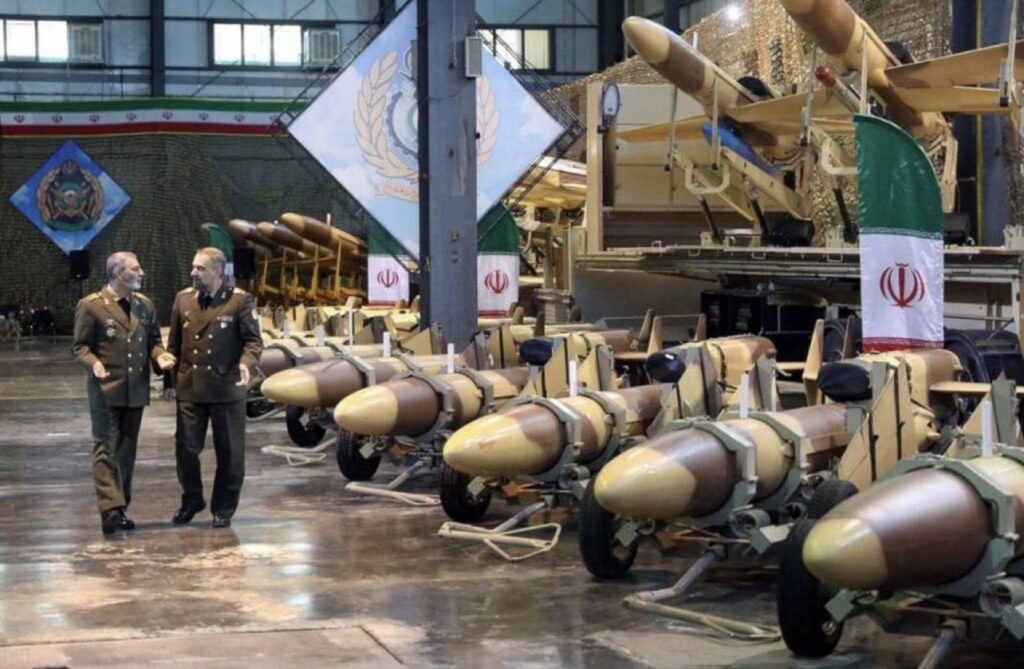UPDATES
Hamas and the Ceasefire Failure/Proportionality and Gaza
Jul 17, 2014

Update from AIJAC
July 17, 2014
Number 07/14 #05
With Hamas having rejected an Egyptian ceasefire deal on Tuesday (the full text of the proposal is here), even after Israel unilaterally ceased fire for several hours (some excellent coverage from Gaza of how Gazans felt about the ceasefire is here) this Update explores what Hamas is trying to achieve via its continued rejection of an end to the fighting. Plus, it also discusses the legally incorrect and counter-productive nature of the focus of so many in the media on the “disproportion” in this conflict between Israeli and Palestinian casualties.
The first piece is an editorial from the Washington Post which explains what Hamas is apparently trying to do very clearly. Hamas is achieving nothing from its attacks on Israel, the paper makes clear, yet is holding out for a better ceasefire deal – so what is Hamas hoping will change? The answer, the paper asserts is “stomach-turning” – they are hoping that more deaths of Gazans in Israeli counter-attacks will cause the international community to force Israel to give into their demands. The paper has much more to say, to read it all, CLICK HERE. Additional good discussion of the interests of the various parties in the recent ceasefire efforts comes from Israeli journalist Shmuel Rosner and former Middle East mediator Dennis Ross.
Next up is Times of Israel Palestinian affairs correspondent Avi Issacharoff, who explores the motives of Hamas in more detail based on his own considerable expertise on the Hamas leadership. Issacharoff agrees that Hamas, while knowing both Arab goverments (which approved the ceasefire Hamas rejected) and international opinion are against it, is hoping the Gaza casualties will change things. He explains the complexity of what Hamas is demanding for a ceasefire- from both Israel and Egypt – but notes that Israel may have miscalculated in not recognising that the military wing is now over-ruling Hamas’ civilian wing and remains determined to fight on until its demands are met. For all of Issacharoff’s knowledgeable analysis, CLICK HERE. Also, noted American columnist Jeffrey Goldberg agrees that Hamas’ goal is “to get Israel to kill as many Palestinians as possible” and contrasts Palestinian lack of state-building efforts to those of the Kurds. More on the Hamas preference for terrorism over statebuilding from Thane Rosenbaum.
Finally, renowned American academic lawyer Alan Dershowitz explores the effects of the legally-baseless focus on proportionality which has dominated so much comment and reporting on the Gaza conflict. He makes it clear that “proportionality” as an international law concept, has absolutely nothing to do with ratio of people killed and that Israel has an unqualified right to attack any military target in self-defence, regardless of whether or not large numbers of Israelis have been killed, providing it makes reasonable efforts to minimise civilian casulaties in the process. He goes on to argue that the obsession with comparing body counts in this and other recent Gaza conflicts only plays into the hands of Hamas and helps lead to the repeated bloodshed in Gaza. For his complete argument why, as well as his detailed legal analysis, CLICK HERE. Also discussing how the law of war applies to the Gaza conflict is academic humanitarian law specialist Laurie Blank.
Readers may also be interested in:
- More comment on the abuse of proportionality and the destructive concentration on the casualty count disparity from Elliot Abrams, Stephanie Gutmann and Eric Yoffie. Plus US Senator Chuck Schumer takes on those who draw a moral equivalency between Israel and Hamas in the current conflict.
- Arab columnist Abdulateef Al-Mulhim points out that the reason Gazans don’t have bomb shelters, like Israelis do, is because Hamas refused to build them. Moreover, as Jonathan Tobin notes, Hamas did build lots of bunkers for their missiles and top military leadership, so it wasn’t because of inability to do so.
- Top Israeli military analysts Amos Yadlin argued that accepting the ceasefire offer was the right move for Israel, while columnist Sima Kadmon says it was courageous decision on the part of PM Netanyahu, in the face of Coalition and public opposition.
- A good general primer on things you should know about this conflict comes from
- Israeli columnist Allison Kaplan Sommer argues the only way that Israel can win the PR war against Hamas is to let Hamas kill more Israelis – but they prefer staying alive to such a victory.
- A piece on the Egyptian role in the current conflict – plus Egyptian columnists, twitter users and others root for Hamas’ defeat.
- A report that Hamas media continues to lie to Gazans about the tremendous successes they are supposedly scoring with their rocket attacks on Israel.
- Hamas and its supporters are caught using photos from other conflicts – and even a still from a Hollywood horror movie – to drum up outrage over Israeli military operations in Gaza.
- American columnist Jonah Goldberg takes on the biggest lie in the debate about the Gaza – the crazily counter-factual assertion that Israel’s policies amount to “genocide.
- Alan Johnson takes on the myth that the blockade of Gaza led to the Hamas rocket attacks – actually the sequence of events is precisely the opposite.
- Some information on how “Iron Dome”, the anti-missile system which has been so crucial to protecting Israelis in this conflict, came to be developed. More on its effects on Israelis under fire here.
- An analysis of Gaza casualty statistics which suggests that the frequently made claims that those being killed are “mostly civilians” is very likely wrong.
- Isi Leibler writes about his continuing disappointment with the Obama Administration’s response to Israel’s security plight in the Gaza situation.
- Some examples from the many stories and comments now appearing at AIJAC’s daily “Fresh AIR” blog:
- Jamie Hyams, in a piece in the Australian, explains the reality of how the recent Gaza conflict came about.
- Sharyn Mittelman explored the details of the machinations that led up to the unsuccessful Egyptian ceasefire proposal. She also wrote about Israeli efforts to ensure that food, humanitarian aid, and medical treatment remain available to Gazans, despite the war.
- Or Avi-Guy explains that, contrary to many media reports, how this whole conflict started is not a mystery but quite simple.
- Robert Ellenhorn chronicles the surge of violent and racist antisemitic incidents, both in Australia and elsewhere, accompanying the conflict in Gaza.
Editorial: Hamas is playing a dangerous game with Gazan lives
SO FAR Hamas’s military campaign against Israel has been a dismal failure. Thanks in part to Israel’s Iron Dome anti-missile system, some 1,200 rockets fired at Tel Aviv, Jerusalem and other cities have caused only one Israeli death and a few other casualties. Attempted commando attacks via the sea and a tunnel were stopped short, and a drone that ventured into Israel was quickly shot down. Yet Hamas on Tuesday rejected an Egyptian cease-fire proposal that was supported by Western governments and the Arab League and had been accepted by Israel.
Why would Hamas insist on continuing the fight when it is faring so poorly? The only plausible answer is stomach-turning: The Islamic movement calculates that it can win the concessions it has yet to obtain from Israel and Egypt not by striking Israel but by perpetuating the killing of its own people in Israeli counterattacks. More than 200 people, including a number of children, have already died in Gaza; Hamas probably calculates that more deaths will prompt Western governments to pressure Israel to grant Hamas’s demands.
So far, the tactic is not working. Secretary of State John F. Kerry on Tuesday condemned Hamas for rejecting the cease-fire and “us[ing] the innocent lives of civilians . . . as shields.” But Hamas’s commanders, who have burrowed into underground bunkers, appear to be doubling down. They are urging civilians who have left their homes to return, including some 15,000 who evacuated the northern part of Gaza in response to Israeli warnings. The cease-fire proposal was answered with a new barrage of missiles aimed at central Israel.
To be sure, the Israeli government of Benjamin Netanyahu has more incentive than Hamas to agree to a cease-fire, even though a majority of the Israeli public probably opposes it. Israel has little to gain from a prolonged conflict; a threatened ground invasion of Gaza would cause heavy casualties on both sides and, if it destroyed Hamas, leave Israel with the problem of finding a new government for the territory. Mr. Netanyahu is seeking the renewal of the truce that ended the last Israel-Hamas mini-war, in 2012. That would end attacks on both sides while allowing for a gradual opening of Gaza’s border for civilian trade.
Hamas’s rejection reflects its weakened position compared with two years ago. Egypt’s military government has shut down most of the cross-border tunnels that Hamas depended on for weapons as well as revenue, making it impossible for the Gaza administration to pay its workforce. The Islamists sought relief by forming a unity government with the secular, West Bank-based Fatah movement, but that did not lead to the payment of salaries or the reopening of the border with Egypt. Following the kidnapping and murder of three Israeli teenagers last month, Israel arrested dozens of Hamas’s operatives in the West Bank, making their release another objective of the missile attacks.
To its credit, Israel has used sophisticated technology, including targeted text messages and dummy warning missiles, to minimize civilian casualties. But innocent people will inevitably be killed in attacks on launchers and missile factories that are purposely placed in densely populated areas. The right response of the international community is not to surrender to Hamas’s despicable tactics but to continue insisting that it unconditionally accept the cease-fire proposed by Egypt.
————————————————————————
Digging in, Hamas believes time is on its side
The terror group’s military wing calculates that world opinion, and mounting Israeli frustration, will ultimately work to its advantage
The celebrations in Israel Tuesday morning over the Egyptian ceasefire initiative were premature. Contrary to the assessment of all manner of eminent Israeli notables, Hamas is not sufficiently weakened to accept an immediate ceasefire that meets none of its demands. Far from it. As Hamas made clear in the course of a rocket-filled Tuesday, it doesn’t give a damn about Egypt or Arab public opinion, and it is continuing on its own path, one of escalation.
You can say a lot to Hamas’s detriment in its handling of this conflict: It was wrong to enter this round of hostilities and it is acting hastily and even idiotically; it underestimated the resilience of the Israel home front and the capabilities of Iron Dome and of Israeli intelligence. But one thing must be acknowledged: It is determined and, to use IDF parlance, focused on seeing its mission through. It’s forces are still standing, and it is emphatically still standing by the demands it issued on the second day of this conflict, with no signs of flexibility. But that determination is likely to bring down disaster upon Gaza, and upon Hamas.
It faced a tough dilemma on Tuesday — a choice between accepting a proposal that did not meet its ceasefire demands but would ensure its survival, on the one hand, or rejecting the Egyptian offer and risking international and Arab isolation, a real threat to its future control of Gaza, and hundreds of deaths, on the other. As is so often the case, jihadism and “resistance” prevailed over governance and firm control. Or, as Hamas parliamentarian Mushir al-Masri put it, Hamas not only rejected the ceasefire, but made plain it was ready to fight to the last of its soldiers. Except perhaps that should be formulated a little differently: Hamas is ready to right to the last drop of blood… of the residents of Gaza.
Hamas’s position makes sense, from its point of view. It wasn’t even told of the Egyptian terms before they were leaked to the Egyptian press. Cairo basically put a loaded pistol on the table and gave Hamas until 9 a.m. to make a decision. The clauses in the Egyptian offer ignored Hamas’s demands and largely replicated the understandings that ended 2012′s Operation Pillar of Defense.
In Israel, meantime, there was a failure to internalize the balance of power between Hamas Gaza and Hamas abroad, and between the military wing and the political hierarchy. Until late Tuesday morning, Israel’s thinking was that Hamas would find it hard to reject the Egyptian terms and that Hamas in Gaza wanted an end to hostilities more than Hamas abroad. Not the case.
The military wing had made clear even before dawn that it would not agree a ceasefire until its demands were met. And Israel evidently hadn’t realized that Hamas’s politicians are taking orders from the military wing these days, not the other way around. Fawzi Barhoum, a Hamas political spokesman, put it best in noting that there would be a truce only when the demands of the Izz ad-Din al-Qassam Brigades were met.
Al-Masri reiterated the military wing’s demands: 1. An end to the blockade of Gaza — a vague demand that may relate to land, sea and air, or only some of the above; 2. The reopening of the Rafah border crossing — a demand to Egypt, not Israel; 3. The release of dozens of its men who were freed in the 2011 Shalit exchange but rearrested in recent weeks as Israel sought the killers of its three teenagers in the West Bank.
That these demands relate to both Israel and Egypt underlines their complexity, and thus the sense that Hamas is still looking at many more days of conflict. It realizes that international opinion is against it, and that the world regards Hamas as having escalated the conflict, but believes that as reports of Gaza civilian casualties mount, world opinion will turn increasingly against Israel. It also believes that in a week or two, the Israeli public will start to become increasingly frustrated by the conflict, by the battering of the rockets, and differences of opinion in Israel will become bitter. And it calculates that if Israeli soldiers start dying, Israeli public pressure will demand an end to the conflict… on better terms for Hamas.
Not only are the sides far apart in terms of ceasefire clauses. Resolving the conflict is also complicated by the absence of a viable brokering mechanism between Israel and Hamas. Gaza’s rulers have made clear that Egyptian mediation is insufficient — put another way, it no longer regards Cairo as an honest broker. It recognizes that Cairo wants to see it weakened in the Arab world and in relation to Mahmoud Abbas’s Palestinian Authority. Finding a broker acceptable to both sides could well prove to be yet another highly complex challenge on the difficult route to end this conflict.
Back to Top
————————————————————————
Media death count encourages Hamas to use human shields
By ALAN DERSHOWITZ
Jerusalem Post, 15/07/2014
By emphasizing the comparative body counts without providing the reasons for the disparity, the media plays into the hands of Hamas, and encourages that terrorist organization to continue to pursue its dead baby strategy.
The media loves to count the dead bodies on each side of a conflict. It’s much easier to count that to explain. Hamas knows this. That’s why they employ what has come to be known as “the dead baby strategy”.
Hamas’ strategy since Israel left Gaza in 2005 has been exactly the same. The media response has been exactly the same. And Hamas will continue to employ a strategy that causes many Palestinian civilians to die as long as the media keeps up its thoughtless body count.
Here’s the way it works: Hamas deliberately fires its rockets from densely populated civilian areas, using hospitals, disability centers, mosques and schools as launching sites. This puts Israel to the tragic choice of either allowing the rockets to endanger its civilians or to destroy the rocket launchers, thereby risking civilian casualties among Hamas’ human shields. Often Israel chooses to forgo attacking military targets, so as not to put Palestinian civilians at risk. Sometimes it has no choice, because the rocket fire against its civilians is persistent. Palestinian civilians are killed despite Israel’s best efforts precisely because Hamas wants civilians to be killed, especially if these civilians are children, women or the elderly. Hamas stands ready to parade these human shields in front of the media which is eager to show the dead and count the bodies.
Hamas could easily reduce the death and injury toll among its civilians, by simply allowing them to go underground into tunnels and shelters which abound throughout Gaza. But Hamas has a deliberate policy of refusing to allow civilians to enter the tunnels or shelters. They reserve these places of refuge for their fighters and commanders, which explains why so few Hamas fighters have been killed. If Hamas were to reverse its policy and allow civilians into the shelters while requiring its fighters to stay above ground, the ratio of civilians to fighters killed would dramatically change. That is why in each of the wars between Hamas and Israel there have been more Palestinian than Israeli civilian deaths and injuries. It is part of Hamas’ dead baby strategy and it works, because the media facilitates it.
The media also emphasizes the fact that thus far no Israelis have been killed by Hamas rocket fire. Indeed some media and international organizations seem implicitly to be condemning Israel for protecting the lives of its own citizens, by repeatedly pointing out that none have died, while Palestinian deaths have reached nearly 200. The reason there have been no Israeli deaths so far is because Israel spends hundreds of millions of dollars trying to protect its civilians, while Hamas spends its resources deliberately exposing its civilians to the risks of Israeli counterattacks. Israel has built shelters all throughout the country and has spent a fortune on the Iron Dome system. The results have been impressive, though many Israelis suffer from trauma, shock and the inevitable long term consequences of being exposed to constant rocket fire.
How many times have you heard, seen or read the body counts: nearly 200 Palestinians dead, no Israelis dead. This is usually accompanied by an accusation that Israel is violating the international law requirement of “proportionality.” This is a misuse of the term, which has a precise meaning in international law that reflects a broader morality. Under international law, a nation has the right to attack military targets. Period! It doesn’t matter whether the rockets coming from these launchers have as yet succeeded in their task of killing civilians. There can be no doubt under international law that rocket launchers, and the fighters who employ them are legitimate military targets. Israel is therefore entitled to attack these targets, even if no Israeli civilians have been killed, so long as it can do so without causing disproportionate civilian casualties.
This rule was not addressed to an enemy that deliberately uses human shields to protect its military targets and combatants against legitimate attacks. Proportionality is not judged by the number of civilians actually killed by Hamas rockets, but rather by the risks posed to Israelis. These risks have been diminished, but not eliminated by the Iron Dome system. They have also been considerably diminished by Israel’s counterattacks on the missile launchers and those who employ them. Without these counterattacks, it is highly likely that more Hamas missiles would have made it through the Iron Dome system which has been approximately 85% effective. Israel has every right under the rules of proportionality to attack these military targets, so long as they take reasonable efforts to reduce civilian casualties. They have done so by leafleting, by calling, and by other methods of warning civilians to leave target areas. Hamas leaders, on the other hand, have urged, and sometimes compelled, their civilians to remain in harm’s way as human shields.
The media, by emphasizing the comparative body counts without providing the reasons for the disparity, play into the hands of Hamas, and encourage that terrorist organization, to continue to pursue its dead baby strategy. So the next time those in the media promote a body count without explanation, they should point a finger at themselves for contributing to this deadly count.
Tags: Israel











